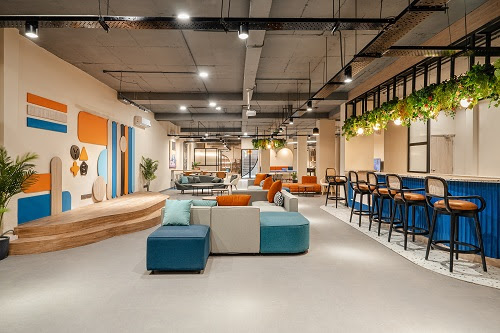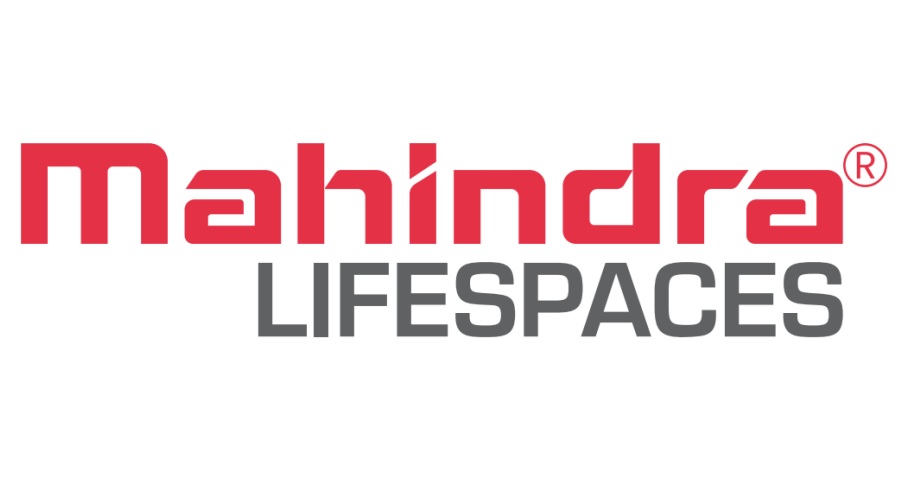 An office should never be a compilation of furniture. It needs to reflect the brand image of the organization.A work space is an opportunity for the organization to make its brand a three-dimensional experience. For architects this means, following the corporate design so that the space should present brand according to its innovation and quality.
The workspace design concept always depends on customers’ needs and on the floor plan. For instance, the planning process of software houses are different to a law office where they need to provide privacy to their clients and where they are obliged to offer private time in more intimate rooms. For example, our office Mondeal Heights has open spaces that reflect the company’s creativity and follows the brand ID of the headquarters. On the other hand, office of a very well-known tax consultant Gleiss Lutz has been designed keeping privacy in mind for its exclusive clientele.
Many companies have their offices in faraway locations and management only gets together for important meetings, yet they remain connected across the globe.In fact, today same workstations are used by different people as employees do not always work from office but also from home or other locations, integrated with the colleagues via online platforms. Moreover, Plug & Play furniture in offices goes hand in hand with the desire for flexible workplaces.
Nowadays, the planning process starts with the question “where do my people work best or most efficient?” Therefore, a fundamental trend is that many companies waive permanent workplaces since the employees like to work on the move or from home.
An office should never be a compilation of furniture. It needs to reflect the brand image of the organization.A work space is an opportunity for the organization to make its brand a three-dimensional experience. For architects this means, following the corporate design so that the space should present brand according to its innovation and quality.
The workspace design concept always depends on customers’ needs and on the floor plan. For instance, the planning process of software houses are different to a law office where they need to provide privacy to their clients and where they are obliged to offer private time in more intimate rooms. For example, our office Mondeal Heights has open spaces that reflect the company’s creativity and follows the brand ID of the headquarters. On the other hand, office of a very well-known tax consultant Gleiss Lutz has been designed keeping privacy in mind for its exclusive clientele.
Many companies have their offices in faraway locations and management only gets together for important meetings, yet they remain connected across the globe.In fact, today same workstations are used by different people as employees do not always work from office but also from home or other locations, integrated with the colleagues via online platforms. Moreover, Plug & Play furniture in offices goes hand in hand with the desire for flexible workplaces.
Nowadays, the planning process starts with the question “where do my people work best or most efficient?” Therefore, a fundamental trend is that many companies waive permanent workplaces since the employees like to work on the move or from home.
 Planning & Productivity
The biggest challenge in office design is to make employees feel comfortable at their workplace through a good planning concept. Despite open-plan offices, smaller enclosed units offer privacy. Additionally, coordination between the architect and the acoustic designers will help minimize the reverberation and room noise. Also, the office design should meet the long term needs of adequate meeting areas, guest’s spaces, and undisturbed work zones and spaces to relax.The most important considerations for work spaces design are:
-Individual
-Flexible
-Cosy
-Generous
However, technology should be the first considerationbefore deciding which style direction you want to approach.In no case, can design precede the integration of the housing of technology.It is also important to consider the clients’taste and the company image, for instance whether someone prefers open ceilings where you can see all technical detailsor whetherthe ceiling closed. Additionally, it is important to define what needs to be covered.
Finally, the design should support the work and the efficiency of all team members. These can be minor details such as the right height of the office desk or the comfort factor of the overall design. The design can be inspiring, for instance by mixing of different materials.
For an eco-friendlyworkplace, use ecological and portable furnituremanufacturedsustainably and minimize energy consumption by integrating a double glazing or insulated walls in new construction.
Planning & Productivity
The biggest challenge in office design is to make employees feel comfortable at their workplace through a good planning concept. Despite open-plan offices, smaller enclosed units offer privacy. Additionally, coordination between the architect and the acoustic designers will help minimize the reverberation and room noise. Also, the office design should meet the long term needs of adequate meeting areas, guest’s spaces, and undisturbed work zones and spaces to relax.The most important considerations for work spaces design are:
-Individual
-Flexible
-Cosy
-Generous
However, technology should be the first considerationbefore deciding which style direction you want to approach.In no case, can design precede the integration of the housing of technology.It is also important to consider the clients’taste and the company image, for instance whether someone prefers open ceilings where you can see all technical detailsor whetherthe ceiling closed. Additionally, it is important to define what needs to be covered.
Finally, the design should support the work and the efficiency of all team members. These can be minor details such as the right height of the office desk or the comfort factor of the overall design. The design can be inspiring, for instance by mixing of different materials.
For an eco-friendlyworkplace, use ecological and portable furnituremanufacturedsustainably and minimize energy consumption by integrating a double glazing or insulated walls in new construction.


















